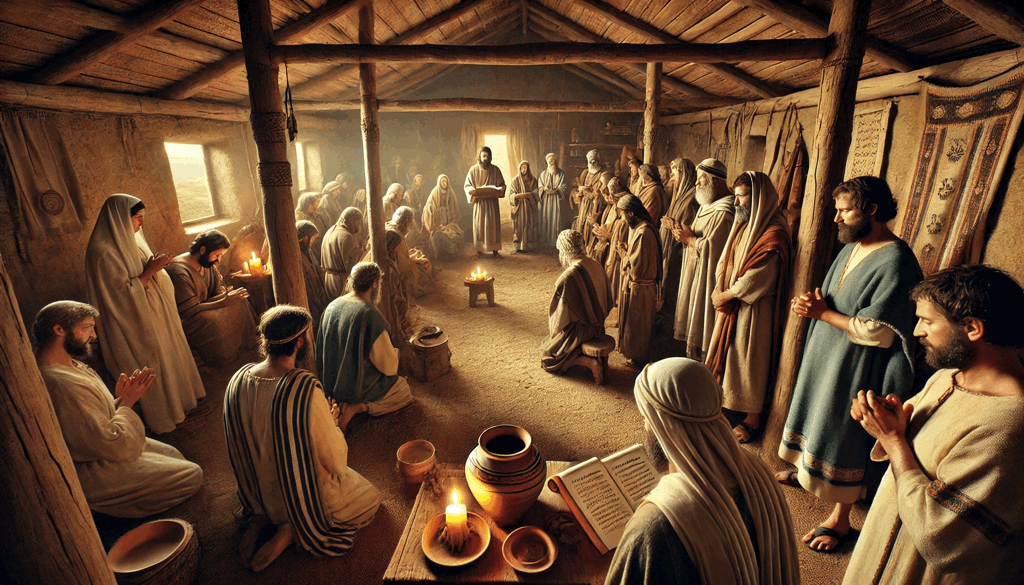Few Bible chapters stir as much conversation as 1 Timothy 2. Whether you’re reading it in a quiet devotional or hearing it discussed in a lively Bible study, this chapter brings forward powerful themes—prayer, authority, gender roles, and God’s universal desire for salvation. In today’s world, where context and clarity are everything, unpacking this passage with both humility and curiosity can lead to a deeper understanding of God’s intent for His people—men and women alike.
The Call to Pray for Everyone
Paul begins this chapter with an urgent call for prayer, urging believers to engage in supplication, intercession, and thanksgiving. The teaching emphasizes different forms of prayer: asking for personal needs (petition), praying on behalf of others (intercession), and giving thanks in all circumstances.
The practical takeaway? Prayer is not optional—it’s central. And it’s not exclusive. Paul tells us to pray for everyone, especially leaders and those in authority. The goal? So “we may lead a tranquil and quiet life in all godliness and dignity.” This is a timeless principle—whether in the first century or today, peaceful societies are often built on spiritual foundations laid through prayer.
God Desires All to Be Saved
This portion of the text reveals a powerful truth about God’s character: He wants everyone to be saved and come to a full knowledge of the truth. This is more than a theological claim—it’s a mission statement.
In a world divided by class, politics, and opinion, this reminds us that the heart of the Gospel is for everyone. There is one mediator between God and humanity—Jesus Christ—who gave Himself as a ransom for all. That phrase alone should reshape our attitude toward those we pray for. No one is beyond God’s desire to redeem.
Authority and Gender Roles in Church Leadership
This is where the conversation gets challenging. Paul discusses specific roles for men and women in the church, and his words have been interpreted in different ways across denominations.
He starts by addressing men, urging them to pray with “holy hands lifted up”—a physical gesture reflecting purity, peace, and a non-contentious heart. It’s a call to worship with humility, not anger or argument.
Then he turns to women, encouraging modesty in appearance and good works as evidence of faith. But the more controversial instruction is that women should “learn quietly with full submission” and not teach or have authority over men in the church.
So how should modern readers understand this?
Three Common Interpretations of the Text
Leadership Role View: Others believe it defines a timeless principle—women can serve in many ways, but ultimate authority and teaching in the church should rest with qualified men.
The host, a woman herself, rejects the extremes. She aligns with the idea that this isn’t about value or intelligence, but about God-ordained roles, similar to roles in a military chain of command. Equal in worth, different in function.
The Real Meaning of “Submission” and “Silence”
Words like “submission” and “silence” trigger modern anxieties, but much of the confusion comes from translation and misunderstanding. The Greek term used for silence can also mean stillness or quietness, not an enforced muzzle. And submission, properly understood, is about willing alignment with a structure, not subjugation.
She likens it to men being under submission to Christ. Everyone submits to someone in a healthy system. When done rightly, submission fosters peace—not oppression.
Why Abuse of the Text Isn’t the Same as the Text
A major point made in the episode is that abuse of Scripture is not the same as Scripture being abusive. Misusing this passage to dominate or silence women is a corruption of the text’s intent. It’s not the Bible that’s the problem—it’s people misapplying it.
Paul’s message, when understood within its context and intent, provides a framework for godly leadership, not legalistic control.
Salvation Through Childbearing?
Toward the end of the chapter, Paul mentions women being “saved through childbearing,” a phrase often misunderstood. The host suggests a common interpretation: Jesus was born through a woman, and in that sense, all are saved through the act of childbearing—not in a literal, works-based sense, but as part of God’s redemption story.
Applying It Today: Finding Peace in Purpose
The key takeaway from 1 Timothy 2 is not about silencing women or raising men above others. It’s about how we, as followers of Christ, engage with prayer, embrace our roles, and pursue peace.
Ask yourself:
- Am I praying regularly for my leaders, even the ones I disagree with?
- Am I living with quiet confidence in my spiritual role?
- Am I letting God’s structure guide me, or fighting against it?
These questions offer a modern lens on an ancient text. Instead of taking offense or skipping the tough parts, we can grow by asking how this passage shapes our faith, humility, and purpose.
Conclusion: The Bigger Picture
1 Timothy 2 reminds us that we’re all part of something greater. God wants all to be saved. Jesus stands as mediator for everyone. Our prayers matter. And when we walk in the roles God designed for us—with grace, humility, and gratitude—we participate in a divine order meant to bless, not burden.
This chapter invites us to embrace God’s wisdom, trust His structure, and stay anchored in His love—regardless of what role we play.

